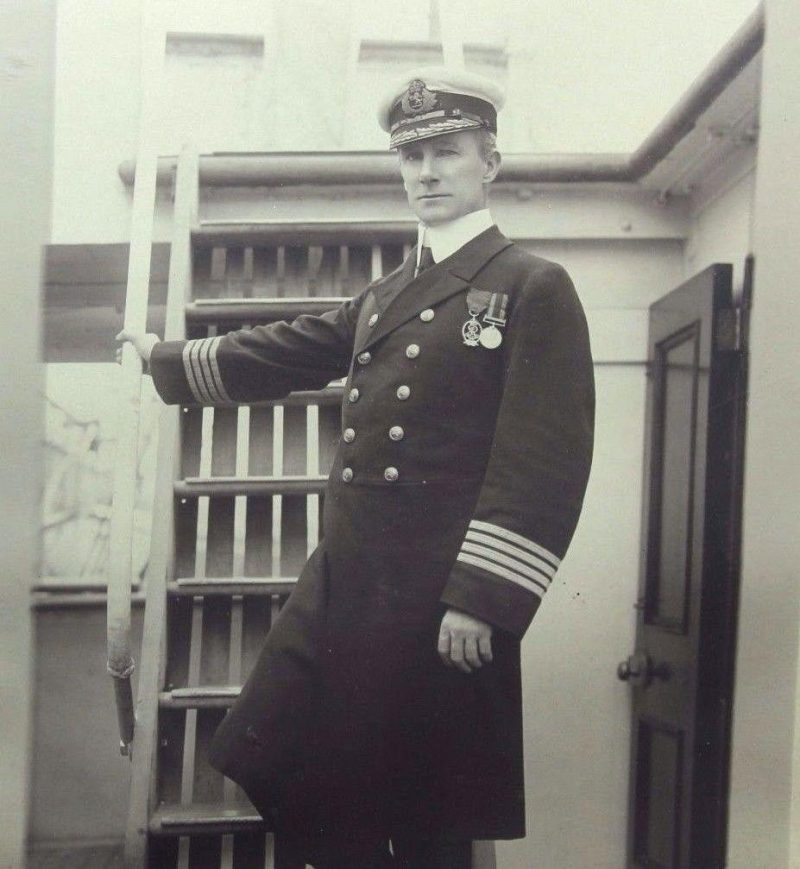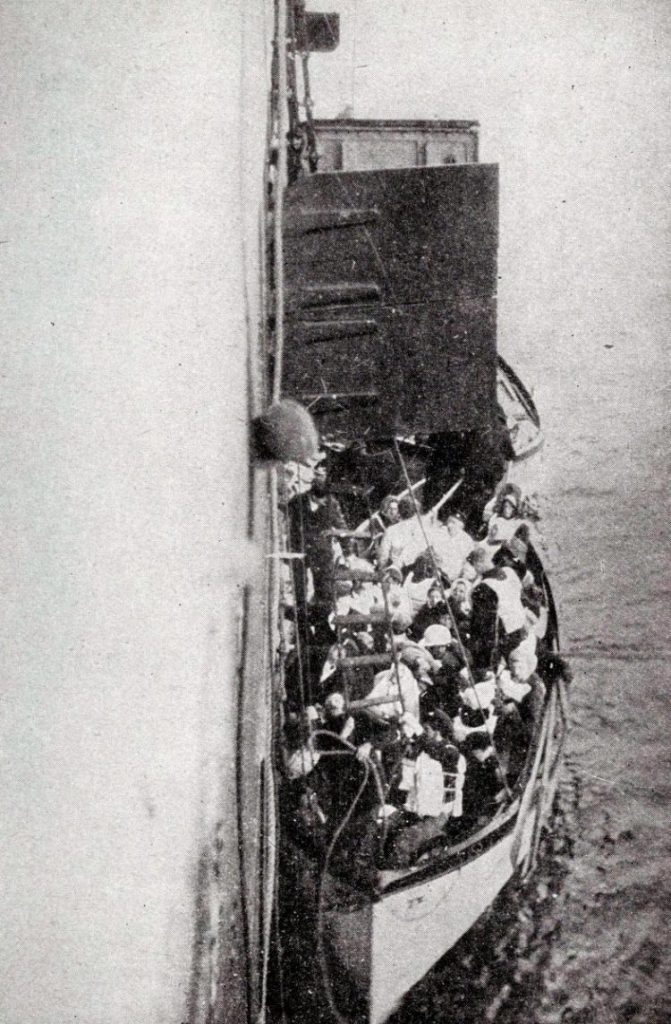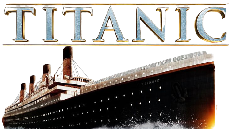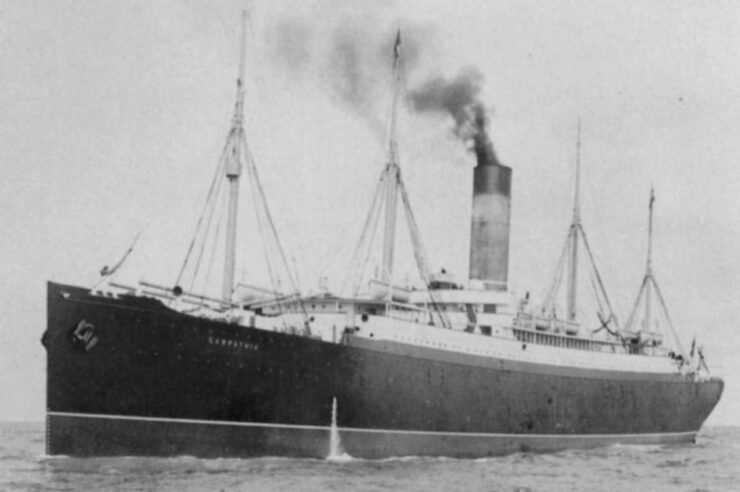Since picking-up Titanic’s distress call, the Cunard Line’s RMS Carpathia had made an heroic all-out dash to the area where Titanic’s senior radio operator, Jack Phillips, had last radioed its position. Her captain, Arthur Rostron, had made a frantic bid to coax as much speed out of his ageing vessel as was possible, and he had ordered all of the off-duty firemen and trimmers to report to the boiler rooms in order to help to keep Carpathia’s boilers at full pressure, providing much-needed steam to the overworked engines.
Rostron had even ordered the steam-heating which supplied the passengers’ cabins to be shut-off, conserving yet more steam for the engines, which had never worked so fast in their lives, nor would they ever again. Passengers who awoke to find their cabins colder than usual could feel the vibrations of the straining engines, and noticed too that the ship’s lights were all burning brightly, and suspected something wasn’t quite right.
As more and more passengers came up on to the deck to see what all the commotion was about, the awful truth began to filter through the pride of the White Star Line, the mighty Titanic , brand new and reputedly unsinkable, had struck an iceberg on her maiden voyage, and was now in danger of sinking, and Carpathia was going to offer whatever assistance she could.

Captain Rostron had never had to respond to an emergency call in all his years at sea, but he spared no effort or cost in preparing the ship well. He ordered Carpathia’s lifeboats to be swung out under their davits, electric lights to be rigged along the side of the ship, the opening of all gangway doors, side and pilot ladders to be dropped, hot drinks to made including tea, coffee and soup, blankets and warm clothing to be collected, plus nets and ropes to be rigged on the side of the ship, ready for the survivors he expected to find to climb up out of the water and from the lifeboats.
He even went to the trouble of having the forward cargo cranes prepared in order to haul aboard the mail and the passengers’ luggage. Rostron then ordered first aid stations to be set up in each of Carpathia’s Dining Rooms, first, second and third, and stationed a doctor in each one.
Then, again reflecting his human side, he ordered all of his crew to have coffee, ready for the long, uncertain night ahead. For a man who had never had to go to the assistance of another ship before, he performed his duties both admirably and professionally, a feat which would not go un-noticed, or un-rewarded by Cunard in years to come.
By 3.30am, Carpathia had reached the exact position given by Titanic’s radio operator, but sickeningly, there was nothing to see. No ship. No lights. No lifeboats. Nothing.
At 4.00am, Captain Rostron ordered the engines of his ship stopped. All of Carpathia’s crew and officers were desperately straining to see some clues, some wreckage, or even some survivors, in the early morning light. Suddenly, one of the crew spotted a green light low down ahead in the water. It was a flare from one of the lifeboats! Boat No. 2, under command of Fourth Officer Joseph Boxhall, was spotted moments later, and after a little manoeuvring from Carpathia, the tiny lifeboat came alongside her starboard gangway doors. First class passenger Elisabeth Walton Allen was the first to be taken aboard at 4.10a.m., and she confirmed to Carpathia’s stunned purser that Titanic had indeed sunk.

Eventually, other the lifeboats approached the side of liner, and more and more survivors began to come aboard, many of them sobbing pitifully, many in shock, some just quietly reflecting on what they had witnessed in the last few terrible hours. Many of the female survivors were firmly under the belief that their husbands, fathers, grandfathers and uncles had been rescued by other vessels, or indeed could be aboard Carpathia.
The last lifeboat to be picked-up was No. 12. It was overloaded, and Second Officer Charles Herbert Lightoller was using all of his sea-faring skills to sail the boat towards the safety of Carpathia. It eventually pulled alongside at 8.30a.m., and 30 minutes later, the final person to be rescued stepped aboard Carpathia.

